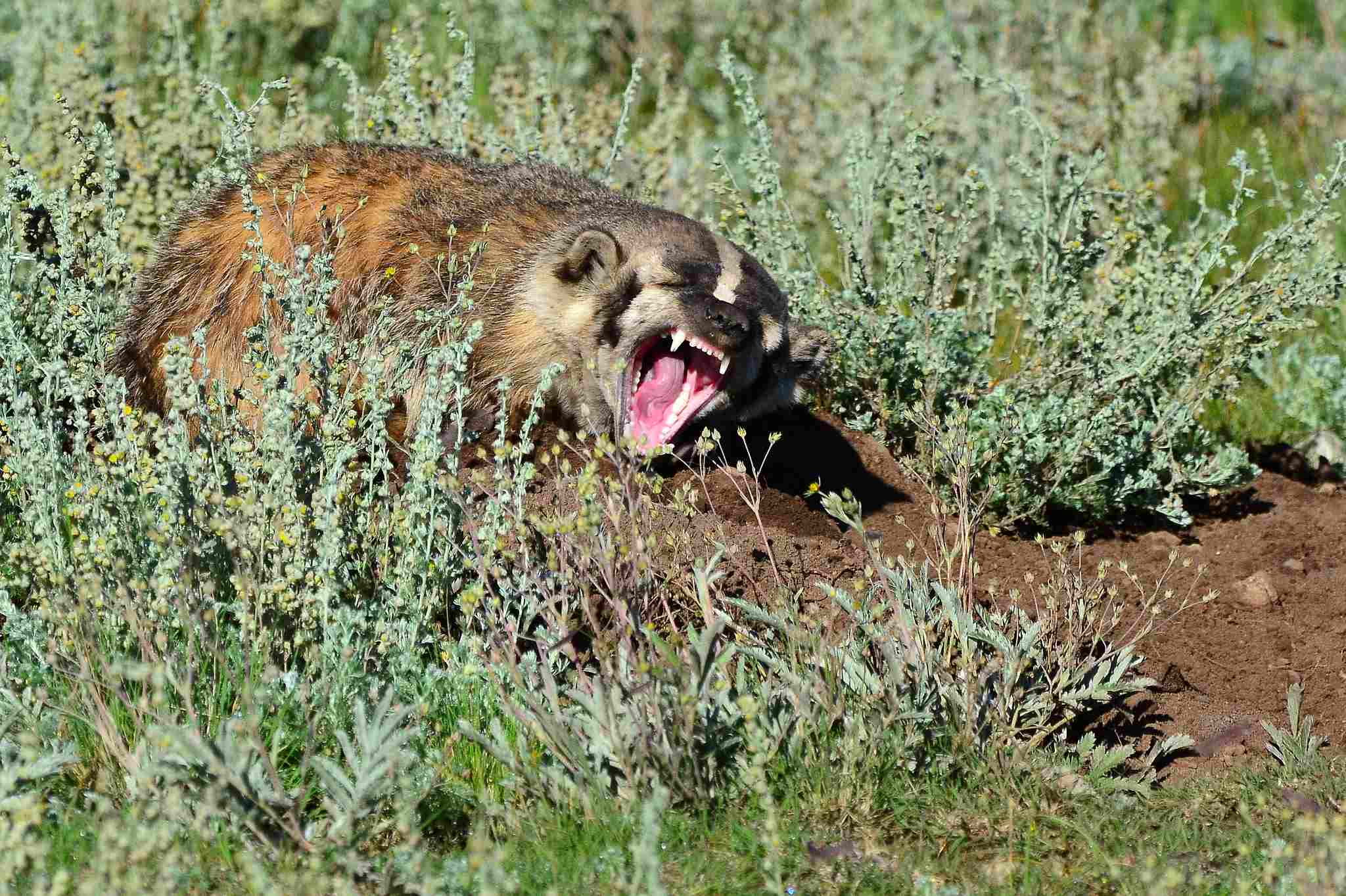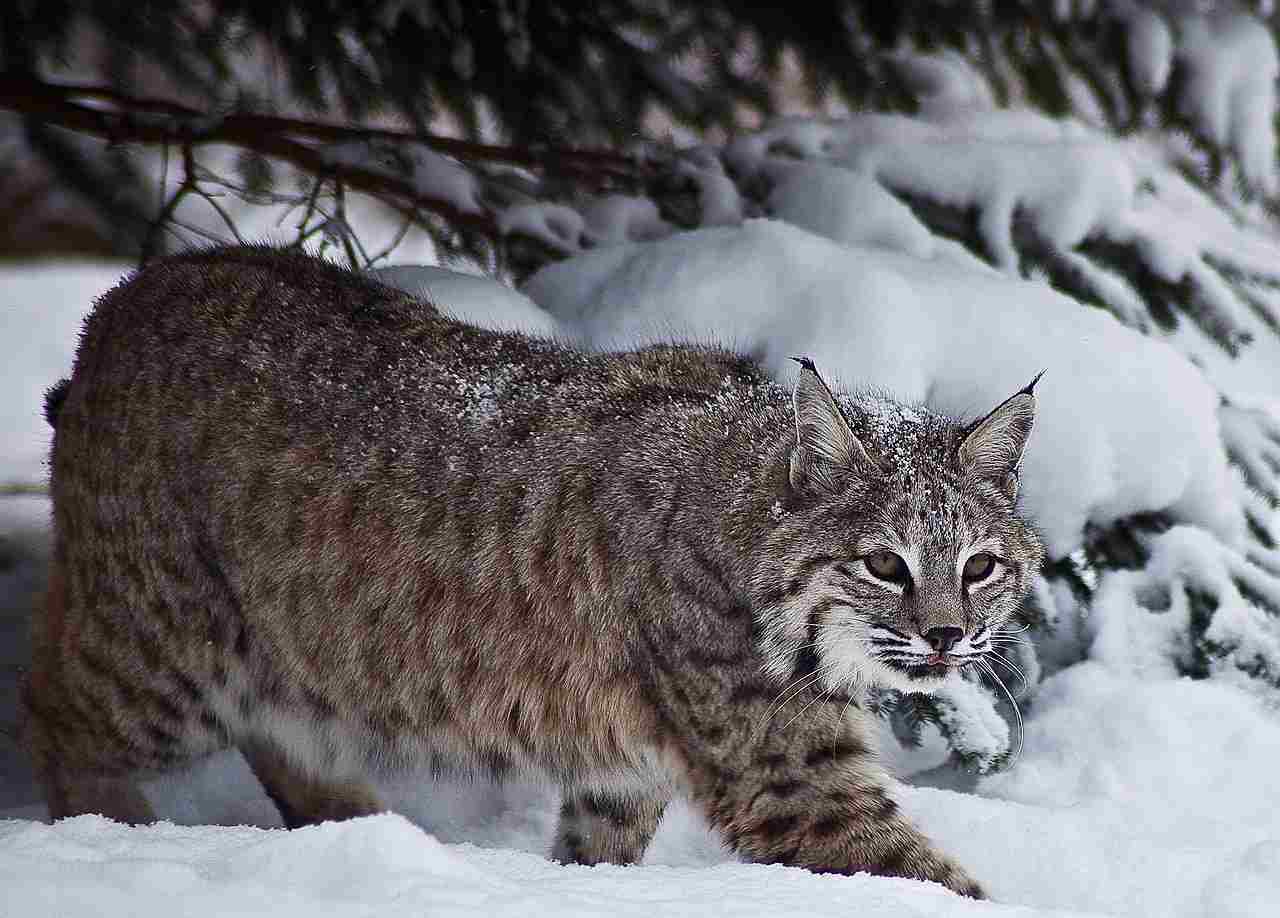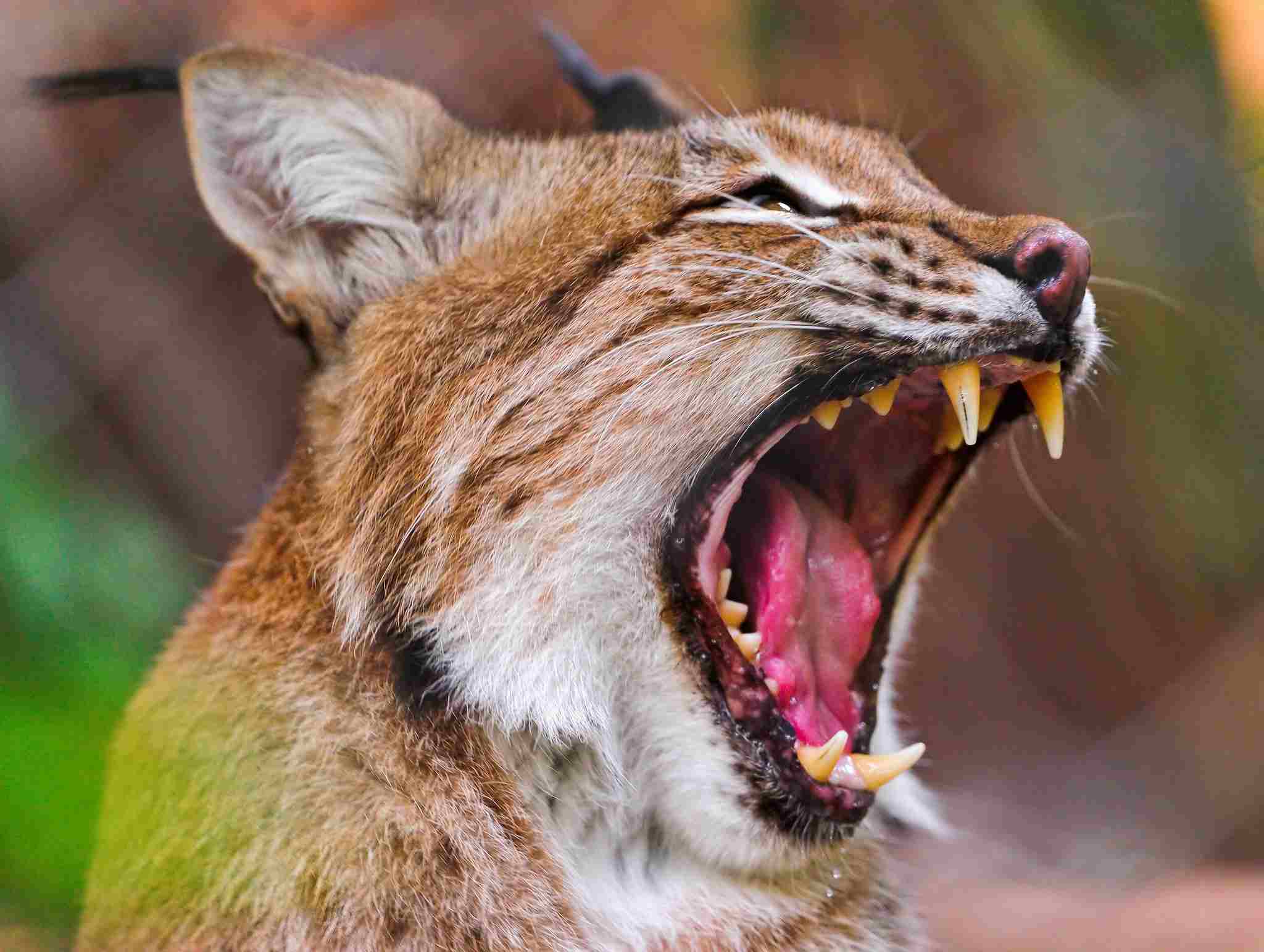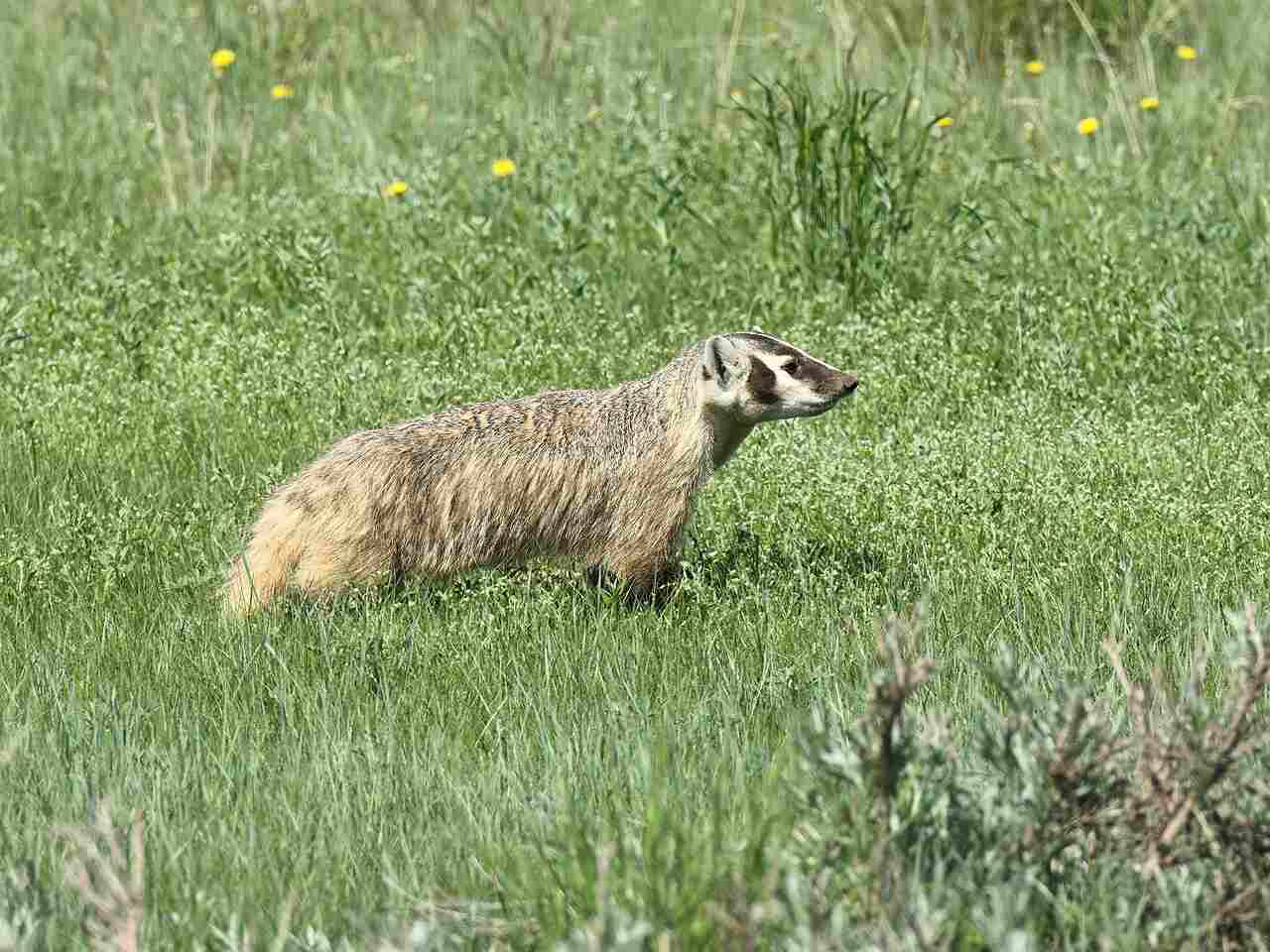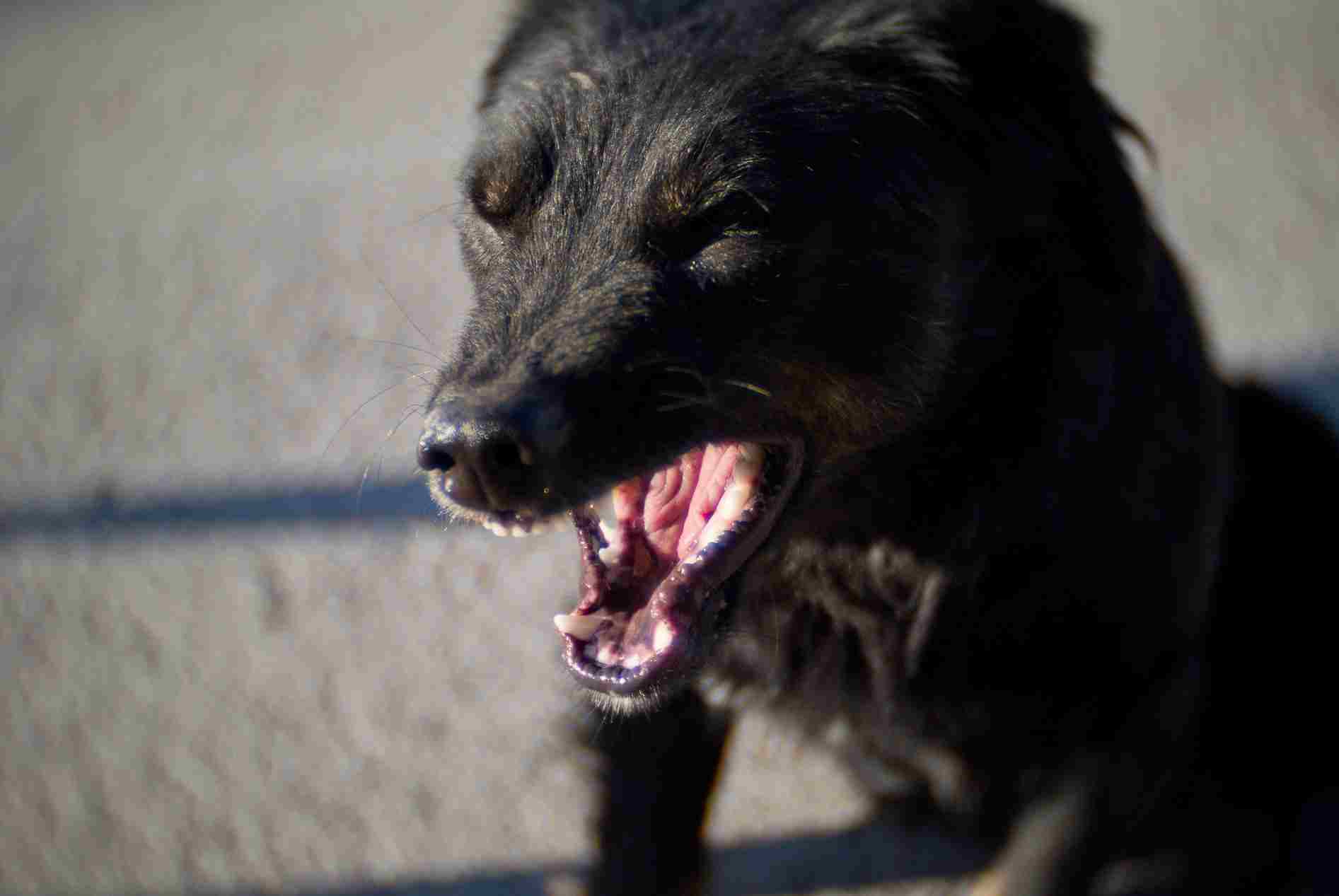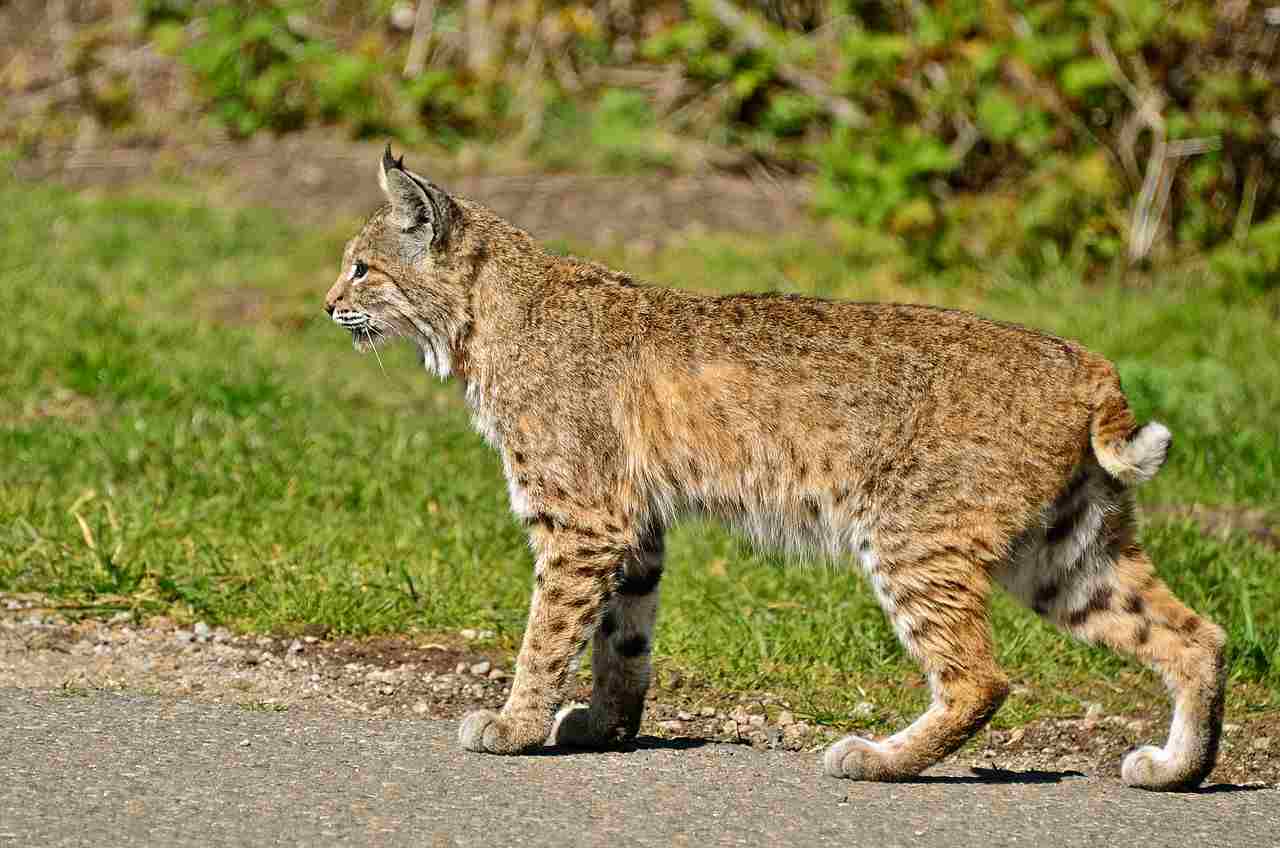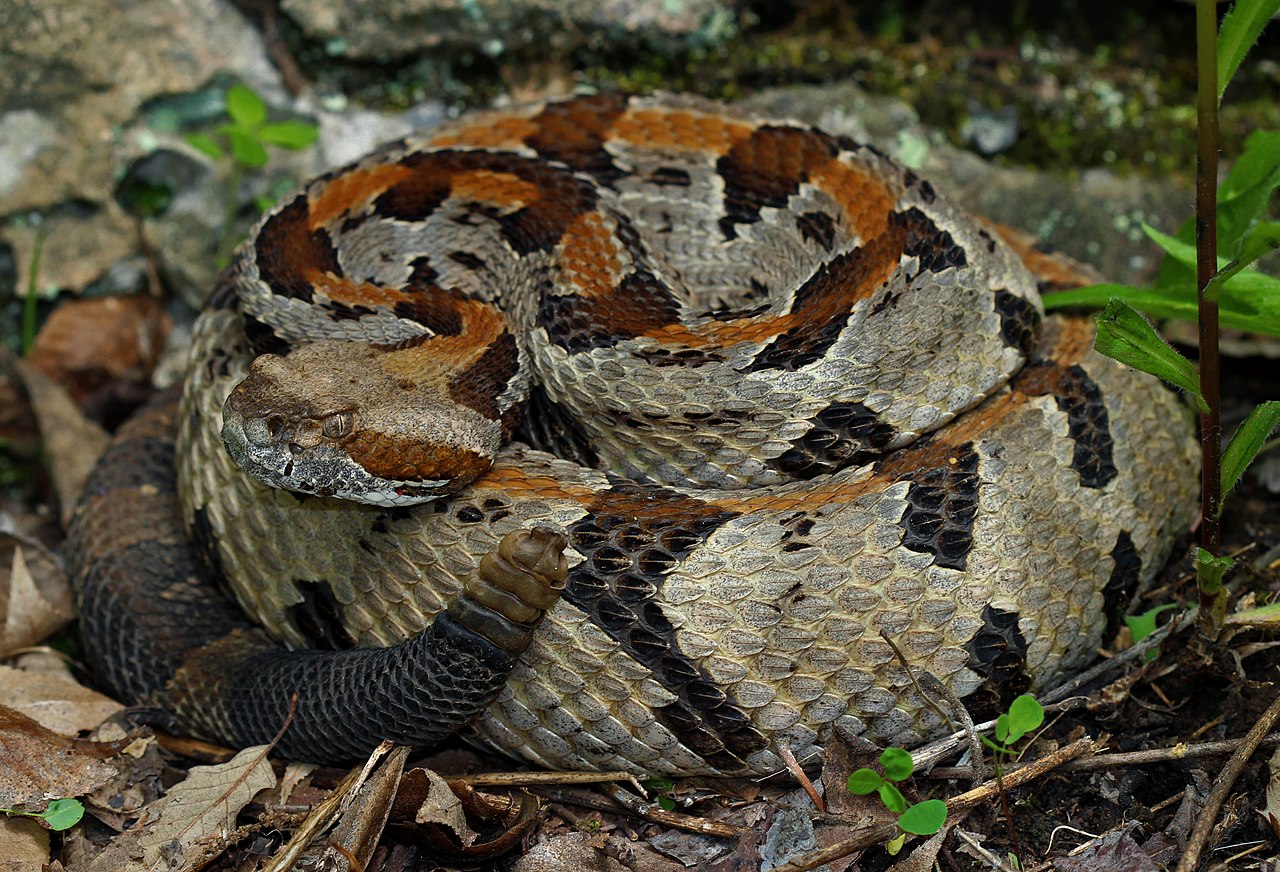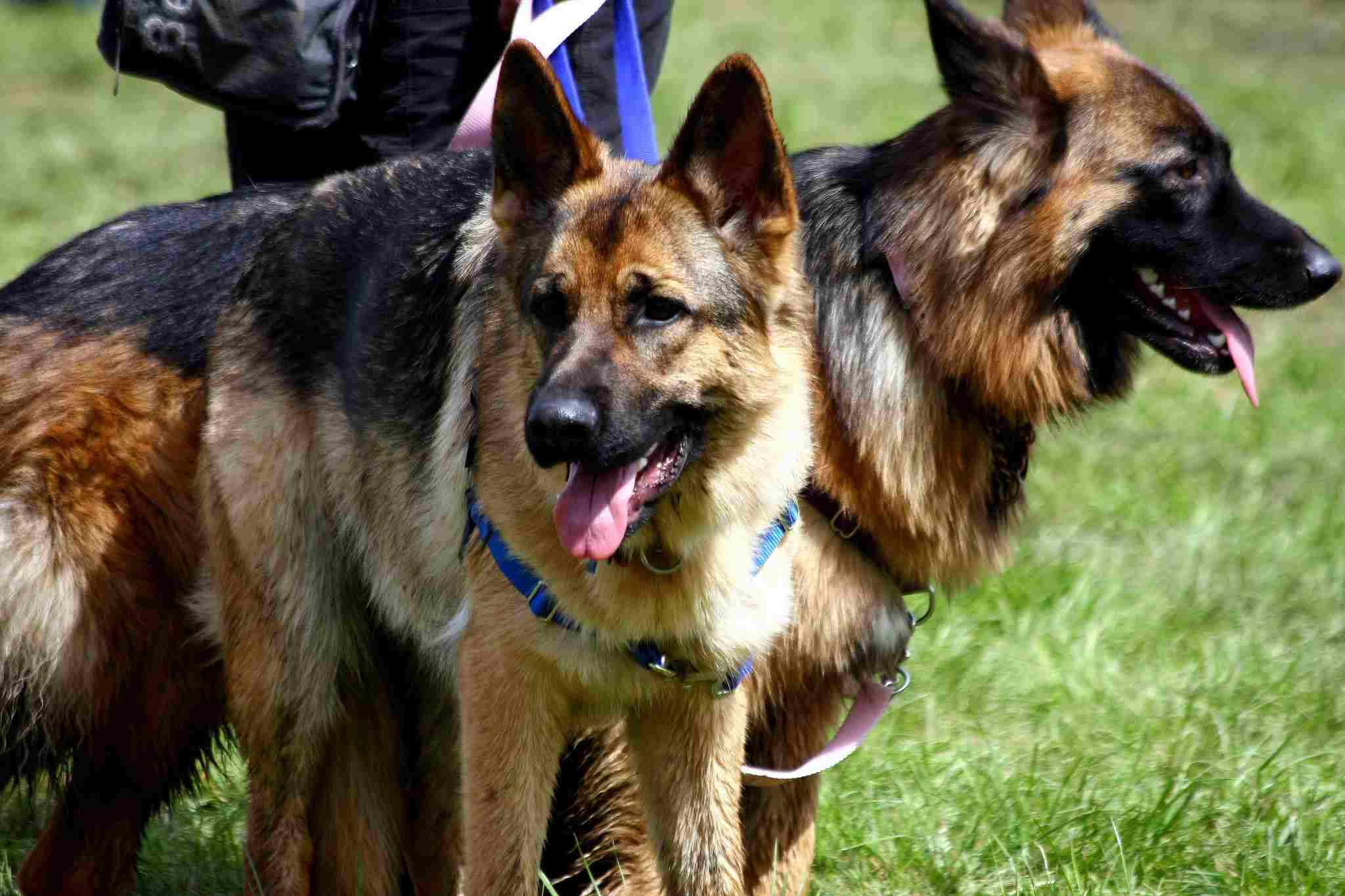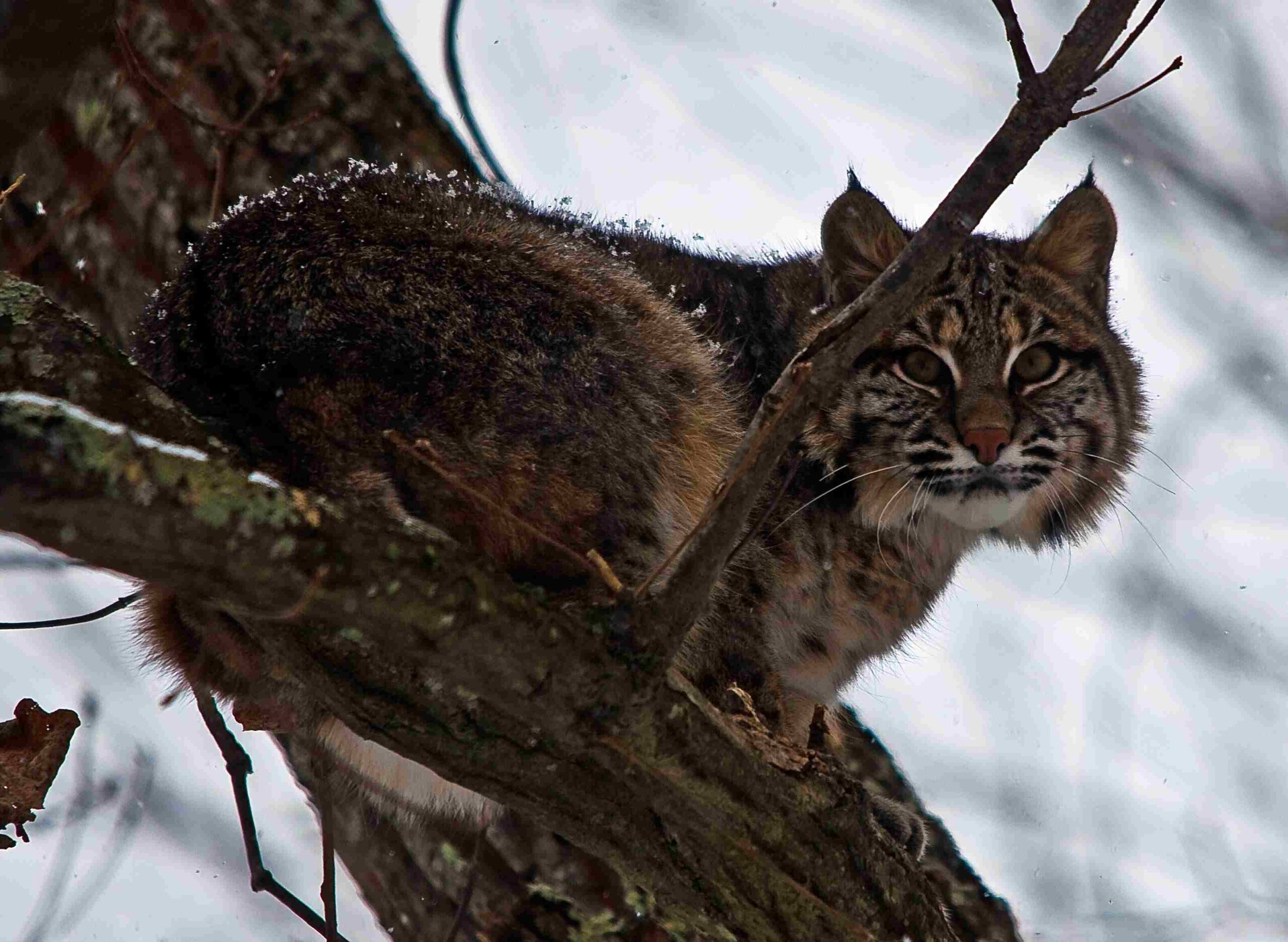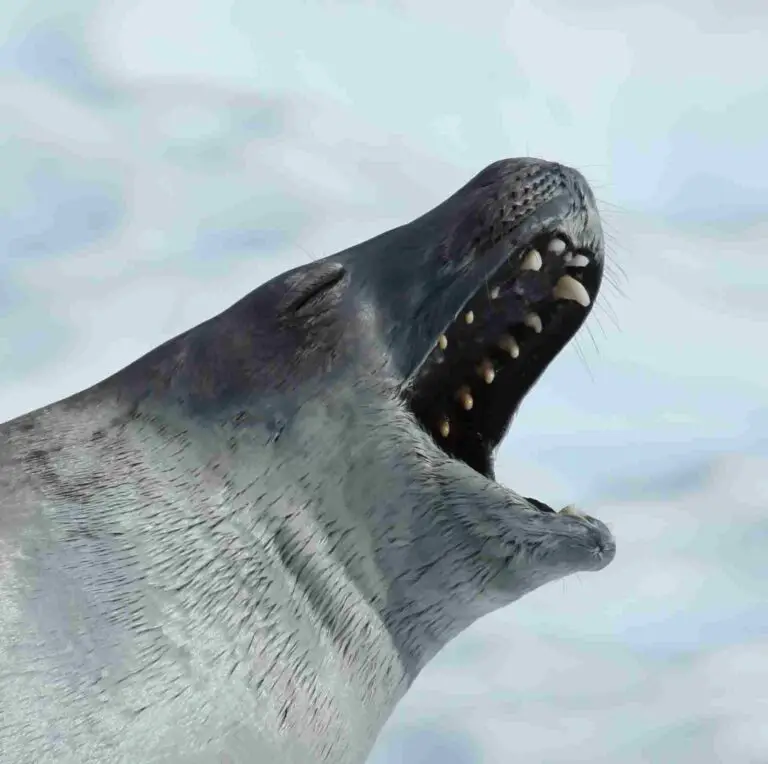9+ Carnivores in Pennsylvania and Their Characteristics
Examples of carnivores in Pennsylvania include bobcats, least weasels, and copperhead snakes. While bobcats are vital for controlling rodent populations, least weasels are agile predators preying on small rodents, and copperhead snakes play a role in controlling rodent populations despite being venomous. These carnivores face threats such as habitat loss and human conflict, highlighting the importance of conservation efforts to protect their populations and preserve Pennsylvania’s biodiversity.
1. Bobcat
Bobcats (Lynx rufus) are elusive and adaptable carnivores native to Pennsylvania, adding a touch of mystery to the state’s wilderness. Recognizable by their tufted ears, short tails, and distinctive spotted fur, these feline predators are skilled hunters, preying on small mammals like rabbits, squirrels, and mice. Despite their solitary nature, bobcats have a wide range in Pennsylvania, found in various habitats including forests, swamps, and even suburban areas.
In Pennsylvania, bobcats play a vital role in controlling rodent populations, helping to maintain ecological balance. However, their populations have faced challenges due to habitat loss, fragmentation, and hunting pressures in the past. Conservation efforts, including habitat preservation and management, have been instrumental in supporting bobcat populations, allowing these magnificent predators to continue thriving in the state’s wilderness.
Encounters with bobcats in Pennsylvania are rare due to their secretive nature, but their presence enriches the state’s natural landscapes, serving as a reminder of the diverse and resilient wildlife that calls Pennsylvania home.
2. Least Weasel
The least weasel (Mustela nivalis) is one of Pennsylvania’s smallest carnivores, yet it possesses a ferocious hunting instinct. With a slender body, short legs, and a long, cylindrical shape, these agile predators are expert hunters, often targeting small rodents like voles and mice. Despite their diminutive size, least weasels are formidable predators, able to pursue prey through tight spaces with remarkable speed and agility.
In Pennsylvania, least weasels inhabit a variety of habitats, including grasslands, forests, and farmlands, where they play a crucial role in controlling rodent populations. Their ability to adapt to diverse environments has enabled them to thrive in different regions of the state. However, like many carnivores, least weasels face threats such as habitat loss and fragmentation, as well as predation by larger mammals and birds of prey.
Conservation efforts aimed at preserving suitable habitats and reducing human-wildlife conflicts are essential for ensuring the continued survival of least weasels in Pennsylvania. By protecting these tiny yet vital predators, we can help maintain the ecological balance of the state’s ecosystems.
3. Wolverine
The wolverine (Gulo gulo) is a formidable carnivore known for its strength, tenacity, and solitary nature. Although not native to Pennsylvania, occasional sightings of wolverines have sparked intrigue and fascination among wildlife enthusiasts in the state. With its muscular build, thick fur, and powerful jaws, the wolverine is well-adapted to thrive in harsh, northern environments, where it preys on a variety of animals, including small mammals and carrion.
While wolverines historically ranged across much of North America, including parts of Pennsylvania, their populations have significantly declined due to habitat loss, trapping, and persecution. Today, wolverines are considered rare and elusive, with only isolated populations remaining in remote wilderness areas. Despite this, the possibility of wolverines returning to Pennsylvania’s wild landscapes highlights the importance of habitat conservation and connectivity to support the recovery of threatened species.
4. Badger
The American badger (Taxidea taxus) is a stout-bodied carnivore known for its digging prowess and distinctive black and white facial markings. While primarily found in western states, badgers occasionally venture into Pennsylvania, particularly in the western regions of the state. With their powerful claws and muscular build, badgers are well-suited for excavating burrows and hunting burrowing prey such as ground squirrels, rabbits, and rodents.
In Pennsylvania, badgers inhabit a range of habitats, including grasslands, farmlands, and open woodlands, where they contribute to the control of rodent populations. Despite their beneficial ecological role, badgers face threats such as habitat loss, road mortality, and conflicts with humans, particularly in areas where their habitat overlaps with agricultural land.
Efforts to conserve and protect suitable habitats for badgers in Pennsylvania are essential for ensuring their continued presence and ecological contributions. By promoting coexistence and implementing strategies to minimize human-wildlife conflicts, we can help safeguard the future of these unique carnivores in the state.
5. Garter Snake
The garter snake (Thamnophis sirtalis) is a common and widespread carnivorous reptile found throughout Pennsylvania. Known for their slender bodies, distinctive stripe patterns, and docile demeanor, garter snakes are often encountered in a variety of habitats, including grasslands, woodlands, wetlands, and suburban areas. Despite being non-venomous, garter snakes are efficient predators, preying on a diverse diet of small vertebrates, amphibians, insects, and earthworms.
In Pennsylvania, garter snakes play a vital ecological role in controlling populations of pests such as slugs and rodents, making them valuable allies to gardeners and farmers. Their adaptability to diverse habitats and ability to thrive in urban environments have contributed to their widespread distribution across the state. However, like many reptiles, garter snakes face threats such as habitat loss, pollution, and road mortality, highlighting the importance of conservation efforts to protect their populations.
6. Copperhead Snake
The copperhead (Agkistrodon contortrix) is a venomous pit viper species found in Pennsylvania, inhabiting a range of forested and rocky habitats across the state. Recognizable by their copper-colored heads and hourglass-shaped patterns along their bodies, copperheads are ambush predators, relying on camouflage and stealth to capture their prey, which primarily consists of small mammals, amphibians, and insects.
Encounters with copperheads in Pennsylvania are relatively common, particularly in forested areas and rocky outcrops. While their venom is potent, copperheads are generally docile and will only strike if threatened or provoked. Despite their venomous nature, copperheads play a crucial role in controlling rodent populations and maintaining ecosystem balance in their habitats.
Conservation efforts aimed at preserving suitable habitats and raising awareness about coexisting with venomous snakes are essential for ensuring the continued survival of copperheads in Pennsylvania. By fostering a better understanding of these enigmatic reptiles and implementing strategies to minimize human-snake conflicts, we can promote harmony between humans and wildlife in the state.
7. Timber Rattlesnake
The timber rattlesnake (Crotalus horridus) is one of Pennsylvania’s largest and most iconic venomous snakes, known for its distinctive rattling sound and formidable reputation. Inhabiting a variety of forested habitats, including deciduous woodlands, rocky outcrops, and mountainous regions, timber rattlesnakes are important predators, preying on small mammals such as mice, squirrels, and rabbits.
Despite their venomous bite, timber rattlesnakes are typically shy and elusive, preferring to avoid confrontation with humans. Encounters with these snakes in Pennsylvania are infrequent, as they often retreat to secluded dens and crevices during the day. However, timber rattlesnakes play a crucial ecological role in controlling rodent populations and maintaining ecosystem balance in their habitats.
Conservation efforts focused on habitat preservation, public education, and responsible management of human-snake interactions are essential for ensuring the survival of timber rattlesnakes in Pennsylvania. By fostering coexistence and appreciation for these fascinating reptiles, we can promote the conservation of their populations and the ecosystems they inhabit.
8. Red-Shouldered Hawk
The red-shouldered hawk (Buteo lineatus) is a striking raptor species found in Pennsylvania, known for its distinctive plumage and haunting call. With its reddish-brown shoulders, barred wings, and piercing yellow eyes, the red-shouldered hawk is a formidable predator, preying on a variety of small mammals, amphibians, reptiles, and even insects. In Pennsylvania, these majestic birds of prey inhabit a range of forested habitats, including deciduous woodlands, wetlands, and riparian areas, where they play a crucial role in controlling populations of rodents and other small animals.
Encounters with red-shouldered hawks in Pennsylvania are not uncommon, particularly in wooded areas and along waterways where they hunt for prey. Their aerial acrobatics and piercing calls add to the allure of Pennsylvania’s natural landscapes, serving as a reminder of the state’s rich biodiversity. However, like many raptor species, red-shouldered hawks face threats such as habitat loss, pesticide exposure, and collisions with vehicles and structures.
Conservation efforts aimed at preserving suitable habitats and reducing human impacts on red-shouldered hawk populations are essential for ensuring their continued survival in Pennsylvania. By protecting forests, wetlands, and other critical habitats, we can help provide essential nesting sites and hunting grounds for these magnificent birds of prey.
9. Northern Harrier Hawk
The northern harrier (Circus hudsonius) is a distinctive raptor species known for its low-flying hunting style and facial disk reminiscent of an owl. With its long wings, slender body, and owl-like facial features, the northern harrier is well-adapted for hunting small mammals, birds, and insects in open grasslands, marshes, and agricultural fields. In Pennsylvania, northern harriers are commonly encountered in wetland habitats, where they soar and glide in search of prey such as mice, voles, and small birds.
Encounters with northern harriers in Pennsylvania are often a sight to behold, as these graceful raptors cruise low over the landscape, scanning for movement below. Their presence serves as an indicator of healthy wetland ecosystems and provides valuable ecosystem services by controlling populations of rodents and other small animals. However, like many birds of prey, northern harriers face threats such as habitat loss, pesticide exposure, and collisions with vehicles and structures.
Conservation efforts focused on protecting and restoring wetland habitats are essential for ensuring the continued survival of northern harriers in Pennsylvania. By preserving these vital ecosystems and minimizing human impacts, we can help safeguard the future of these majestic raptors and the diverse wildlife that depends on them.
10. Golden Eagle
The golden eagle (Aquila chrysaetos) is a majestic raptor species known for its impressive size, powerful talons, and keen eyesight. With its dark brown plumage, golden nape, and massive wingspan, the golden eagle commands attention as one of Pennsylvania’s apex predators. Inhabiting a variety of habitats, including mountainous regions, open grasslands, and forests, golden eagles are opportunistic hunters, preying on a diverse range of animals such as rabbits, ground squirrels, and occasionally larger prey like deer fawns.
Encounters with golden eagles in Pennsylvania are rare but memorable, as these magnificent birds soar effortlessly through the sky in search of prey. Their presence adds to the allure of Pennsylvania’s wild landscapes, serving as a symbol of strength and resilience in the face of environmental challenges. However, like many raptor species, golden eagles face threats such as habitat loss, human disturbance, and collisions with wind turbines and power lines.
Conservation efforts aimed at protecting critical habitat, reducing human impacts, and minimizing conflicts with human activities are essential for ensuring the continued survival of golden eagles in Pennsylvania. By fostering a better understanding of these iconic birds and implementing measures to mitigate potential threats, we can help secure a brighter future for golden eagles and the ecosystems they inhabit.
11. Rough-Legged Hawk
The rough-legged hawk (Buteo lagopus) is a striking raptor species known for its feathered legs and habit of hovering while hunting. With its mottled brown plumage, dark belly band, and characteristic black wrist patches, the rough-legged hawk is a distinctive sight in Pennsylvania’s open landscapes, particularly during the winter months when it migrates south from its Arctic breeding grounds. In Pennsylvania, rough-legged hawks are commonly encountered in rural areas, where they hunt for small mammals such as voles, mice, and ground squirrels.
Encounters with rough-legged hawks in Pennsylvania are often a treat for birdwatchers, as these majestic raptors patrol the skies in search of prey. Their winter presence adds diversity to Pennsylvania’s avian fauna and provides valuable ecosystem services by helping to control rodent populations. However, like many migratory birds of prey, rough-legged hawks face threats such as habitat loss, pesticide exposure, and collisions with vehicles and structures.
Conservation efforts aimed at protecting and restoring suitable habitats for rough-legged hawks during their wintering period in Pennsylvania are essential for ensuring their continued survival. By preserving open grasslands, agricultural fields, and wetland habitats, we can provide essential foraging grounds and roosting sites for these magnificent birds of prey, contributing to the conservation of Pennsylvania’s biodiversity.
*Summary
-
Bobcat:
-
Elusive carnivore with spotted fur, tufted ears.
-
Vital for rodent control in Pennsylvania’s diverse habitats.
-
Conservation efforts crucial for population survival amidst habitat loss.
-
-
Least Weasel:
-
Small, agile carnivore preying on rodents.
-
Adaptability enables thriving in various Pennsylvania habitats.
-
Conservation efforts necessary to counter habitat loss threats.
-
-
Wolverine:
-
Strong, solitary carnivore with declining populations.
-
Historically ranged in Pennsylvania, facing habitat loss challenges.
-
Preservation efforts vital for potential return and conservation.
-
-
Badger:
-
Stout carnivore aiding rodent control in western Pennsylvania.
-
Faces threats like habitat loss and human conflict.
-
Conservation strategies essential for population protection.
-
-
Garter Snake:
-
Common reptile predator found across Pennsylvania.
-
Plays vital role in rodent control, adaptable to various habitats.
-
Conservation efforts crucial amid habitat degradation.
-
-
Copperhead Snake:
-
Venomous predator in Pennsylvania forests.
-
Vital for rodent control but faces habitat loss and conflicts.
-
Conservation education and habitat preservation necessary.
-
-
Timber Rattlesnake:
-
Iconic but elusive venomous snake in Pennsylvania.
-
Important for rodent control in diverse habitats.
-
Habitat preservation and human-snake conflict management crucial.
-
-
Red-Shouldered Hawk:
-
Striking raptor controlling rodent populations.
-
Habitat preservation and reduced human impact vital for survival.
-
-
Northern Harrier Hawk:
-
Low-flying predator crucial for wetland ecosystem balance.
-
Conservation efforts needed to protect habitats and minimize threats.
-
-
Golden Eagle:
-
Majestic raptor known for impressive hunting skills.
-
Rare presence in Pennsylvania due to habitat loss and human impacts.
-
Conservation measures crucial for future survival and habitat protection.
-
-
Rough-Legged Hawk:
-
Distinctive raptor frequenting Pennsylvania’s open landscapes.
-
Migration patterns and winter presence important for ecosystem balance.
-
Habitat preservation and conservation efforts necessary for population stability.
-
| Carnivores | Summary |
| Bobcat |
Elusive predator aiding rodent control, facing habitat loss challenges in diverse habitats.
|
| Least Weasel |
Agile rodent predator adaptable to various Pennsylvania habitats, threatened by habitat loss.
|
| Wolverine |
Historically ranged in Pennsylvania, faces habitat loss; conservation efforts crucial.
|
| Badger |
Stout carnivore aiding rodent control, needs conservation strategies amid habitat loss.
|
| Garter Snake |
Common reptile predator vital for rodent control, adaptable but facing habitat degradation.
|
| Copperhead Snake |
Venomous predator in forests, important for rodent control; needs conservation education.
|
| Timber Rattlesnake |
Iconic yet elusive venomous snake aiding rodent control, needs habitat preservation efforts.
|
| Red-Shouldered Hawk |
Striking raptor controlling rodent populations, needs habitat preservation and reduced impacts.
|
| Northern Harrier Hawk |
Low-flying predator crucial for wetland ecosystems, requires habitat protection and conservation.
|
| Golden Eagle |
Majestic raptor facing habitat loss and human impacts, needs conservation for future survival.
|
| Rough-Legged Hawk |
Distinctive raptor frequenting open landscapes, requires habitat preservation for stability.
|
Related FAQs
Q: Are bobcats dangerous to humans in Pennsylvania? A: Bobcats are generally not a threat to humans in Pennsylvania. They are shy and elusive animals that prefer to avoid human interaction. However, like any wild animal, they may act defensively if cornered or threatened. It’s important to give them space and avoid approaching or feeding them.
Q: What should I do if I encounter a copperhead snake in Pennsylvania? A: If you encounter a copperhead snake in Pennsylvania, the best course of action is to calmly and slowly back away from the snake. Copperheads are venomous, but they are not aggressive and will typically only bite if they feel threatened. Avoid trying to handle or disturb the snake, and give it plenty of space to retreat into its natural habitat.
Q: How can I help conserve golden eagles in Pennsylvania? A: You can help conserve golden eagles in Pennsylvania by supporting habitat preservation efforts, advocating for responsible land management practices, and participating in citizen science initiatives that monitor eagle populations. Additionally, minimizing human impacts such as disturbance, habitat fragmentation, and pollution can contribute to the conservation of these majestic raptors.
Q: Are rough-legged hawks endangered in Pennsylvania? A: Rough-legged hawks are not considered endangered in Pennsylvania, but their populations may face threats from habitat loss, human disturbance, and other factors. Conservation efforts focused on preserving their wintering habitats, protecting open landscapes, and minimizing human impacts can help ensure the continued presence of rough-legged hawks in Pennsylvania.
